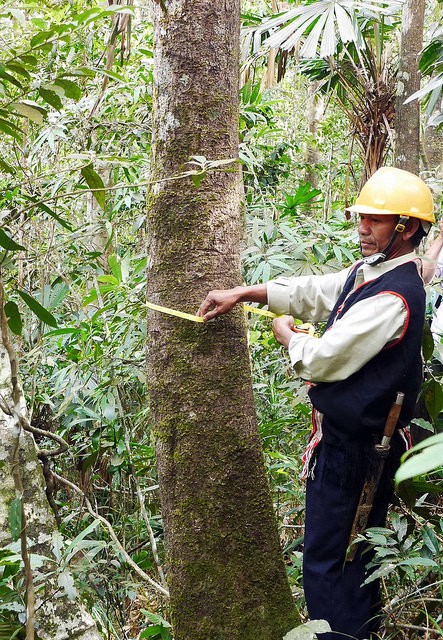
For Immediate Release
BANGKOK, March 21, 2016 – Empowered by a curriculum developed by the U.S. Agency for International Development Lowering Emissions in Asia’s Forests (USAID LEAF) program, 700 professors at 63 universities in the Asia-Pacific region are rolling out education to a new generation of climate change professionals in Southeast Asia.
Working with university professors mainly from the Lower Mekong region, USAID LEAF and the United States Forest Service designed the curriculum to cover basic climate change, social and environmental soundness, low emission land use planning and carbon measurement and monitoring. The curriculum is adapted to specific country contexts, and is already being used in classrooms to teach more than 30,000 undergraduate and 700 graduate students.
"Taking climate change to classrooms in the region today is a powerful way to ensure that tomorrow’s leaders are already thinking about forests and the environment," said Beth Paige, director for USAID’s Regional Development Mission in Asia, on the occasion of the International Day of Forests. "We need the energy and drive of intelligent, innovative youth to lock in climate change on national and regional agendas. That’s our collective hope for the future of our planet."
Universities are now working to integrate the climate change curriculum as mandatory classes. At Dalat University, a leading research and technology institution in central Vietnam, 8,000 students are required to take an introductory climate change course. At Kasetsart University in Thailand, new undergraduate students take a general education course on climate change that integrates all four curriculum modules. Other universities are following suit.
"It’s easier for me to prepare lessons because the material is ready to use," said Mrs. Somvilay Chanthalounnavong, who teaches at the National University of Laos. "There are examples, case studies and guides for the instructor about how to explain the concepts and how to use the material, including role plays, questions and answers and quizzes."
The curriculum also works well at Thai universities. "If you show scientific evidence for climate change, students really get it," said Dr. Pimonrat Tiansawat from Chiang Mai University. "They get excited when I talk about ice cores and tree rings. They see the evidence and are more engaged."
Forests cover about 26 percent of the Asia-Pacific region providing livelihoods for local communities and environmental benefits such as reducing carbon and conserving biodiversity. Forests help reduce the negative effects of climate change by storing carbon and greenhouse gas emissions, but the region is experiencing a high rate of forest degradation and deforestation from agricultural expansion, unsustainable logging, urbanization and other factors.
Another highlight of USAID LEAF, which concludes this year, is the Asia-Pacific Leadership Initiative on Gender and Climate Change.
Twenty-four gender champions—men and women within government ministries, institutes of higher education and non-governmental organizations—gained skills and knowledge to better integrate gender into forest policy and to drive the development of new policies that effectively address gender gaps.
In addition, project support for the Provincial Reduced Emissions from Deforestation and Forest Degradation (REDD+) Action Plan in Lam Dong, Vietnam, will help the provincial government reduce emissions from the forestry-land use sector by an estimated 27 percent by 2020. This plan represents the most advanced and complete elements of a national REDD+ system in the region. Lessons from Lam Dong are already being brought to other provinces, and feed into national guidelines for Provincial REDD+ Action Plan development. The Lam Dong experience is expected to serve as a leading regional example of the development of a land use plan that balances economic growth, environmental protection, social equity and climate change mitigation.
Other project highlights include more than 20 innovative tools developed and replicated through regional policy and knowledge platforms. These tools help policymakers addressing drivers of deforestation and associated greenhouse gas emissions, resulting in nearly a million hectares of improved natural resource management and eight million tons of greenhouse gas emissions reduced. They project team also provided technical support to government drafting teams in Asia to develop, revise or adopt more than 33 laws, regulations or policies.
Partners, collaborators, beneficiaries and supporters of USAID LEAF and others interested in climate change can continue to benefit from the work of the project by accessing tools and other publications here (http://www.leafasia.org/tools
# # #
See photos from the USAID LEAF activity here: https://www.flickr.com/gp/







Comment
Make a general inquiry or suggest an improvement.